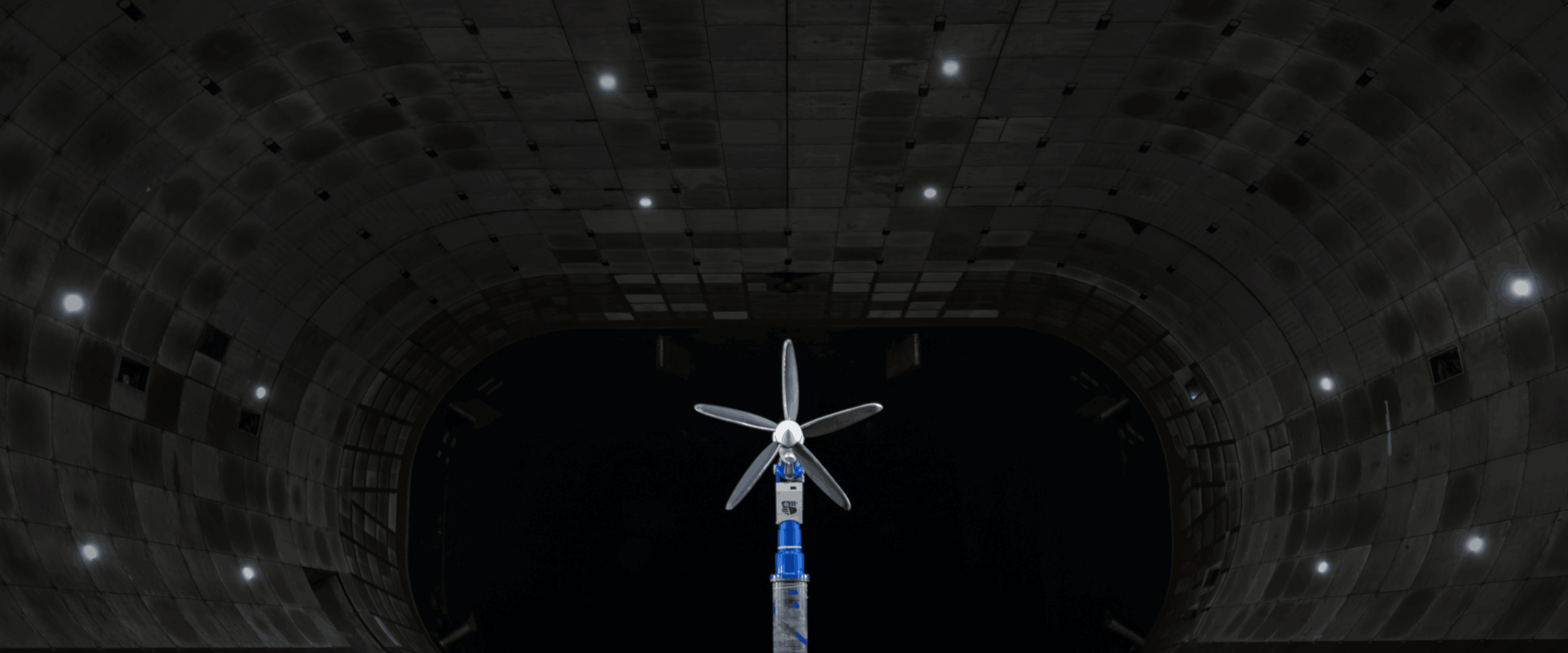We collect cookies. Read our privacy policy. Do you accept?
Feb 16, 2023 — Joby Aviation, Inc. (NYSE:JOBY), a company developing all-electric aircraft for commercial passenger service, today announced it is beginning testing at the National Full-Scale Aerodynamic Complex (NFAC), the world’s largest wind tunnel facility, at NASA’s Ames Research Center in California’s Silicon Valley.
The NFAC, managed by the U.S. Air Force’s Arnold Engineering Development Complex, contains the two largest operational wind tunnels in the world. Data from propeller testing in the NFAC — widely considered to be the gold standard for aircraft aerodynamics and performance — was instrumental in the development of a range of iconic vehicles, including the space shuttle, the V-22 Osprey, the F-35 Joint Strike Fighter, and a number of next-generation helicopters.
Joby is believed to be the first electric vertical take-off and landing (eVTOL) company to test its propeller in the NFAC’s 40-by-80 foot wind tunnel.
“Testing is a critical part of our aircraft program and the opportunity to gather data on the performance of our propellers in one of the world’s largest wind tunnels is an exciting step toward commercialization,” said JoeBen Bevirt, Founder and CEO of Joby.
“This facility helped introduce historic aircraft to the world, and now it’s doing the same for the next generation of sustainable aviation,” he added.
Lt Col Tom Meagher, Lead for AFWERX Prime programs, commented: “A cornerstone of the AFWERX Agility Prime program is fostering interagency partnerships and collaboration to progress the advanced air mobility segment. The NFAC testing is a perfect example of utilizing unique government test resources and infrastructure critical to enabling industry progression.”
The test campaign will cover all tilt angles and speeds through the expected flight envelope, providing Joby with consistent and high-fidelity data on the performance, loads, and acoustics of its propeller systems in support of its certification program with the Federal Aviation Administration (FAA).
Working in partnership with the U.S. Air Force and NASA, Joby is installing a production-intent electric propulsion unit and propeller assembly in the wind tunnel mounted to a six-degree-of-freedom force and moment balance to capture performance data. The blades are instrumented to measure the loads experienced while rotating, and a representative wing section of the Joby aircraft allows careful analysis of aerodynamic interference effects.
The NFAC propeller test campaign is expected to produce data of unparalleled quality – exceeding what is captured during normal flight testing – due to superior instrumentation and precise control of variables. The full test campaign is expected to take several months to complete.
Joby and NASA previously partnered on a variety of projects exploring electric aircraft technology, including the design of the agency’s all-electric X-57 Maxwell prototype. The agency also completed a two-week acoustic testing program with Joby in 2022 as part of NASA’s Advanced Air Mobility National Campaign.
With more than 1,000 test flights completed, Joby’s piloted, all-electric aircraft is designed to offer a faster and quieter method of aerial transportation across cities and communities with zero operating emissions. Joby expects to launch commercial aerial ridesharing service in the United States in 2025.
About Joby
Joby Aviation, Inc. (NYSE:JOBY) is a California-based transportation company developing an all-electric, vertical take-off and landing aircraft which it intends to operate as part of a fast, quiet, and convenient service in cities around the world. To learn more, visit www.jobyaviation.com.
Forward Looking Statements
This press release contains “forward-looking statements” within the meaning of the “safe harbor” provisions of the Private Securities Litigation Reform Act of 1995, including but not limited to, statements regarding the development and performance of our aircraft, including our expectation to start commercial passenger service in 2025, the expected benefits of our testing program with NFAC; and our current expectations relating to our business. You can identify forward-looking statements by the fact that they do not relate strictly to historical or current facts. These statements may include words such as “anticipate”, “estimate”, “expect”, “project”, “plan”, “intend”, “believe”, “may”, “will”, “should”, “can have”, “likely” and other words and terms of similar meaning in connection with any discussion of the timing or nature of future operating or financial performance or other events. All forward looking statements are subject to risks and uncertainties that may cause actual results to differ materially, including: our ability to launch our aerial ridesharing service and the growth of the urban air mobility market generally; our ability to produce aircraft that meet our performance expectations in the volumes and on the timelines that we project, and our ability to launch our service; the competitive environment in which we operate; our future capital needs; our ability to adequately protect and enforce our intellectual property rights; our ability to effectively respond to evolving regulations and standards relating to our aircraft; our reliance on third-party suppliers and service partners; uncertainties related to our estimates of the size of the market for our service and future revenue opportunities; and other important factors discussed in the section titled “Risk Factors” in our Annual Report on Form 10-K, filed with the Securities and Exchange Commission (the “SEC”) on March 28, 2022, and in future filings and other reports we file with or furnish to the SEC. Any such forward-looking statements represent management’s estimates and beliefs as of the date of this presentation. While we may elect to update such forward-looking statements at some point in the future, we disclaim any obligation to do so, even if subsequent events cause our views to change.
Contacts:
Joby Aviation
Investors:
Media:
